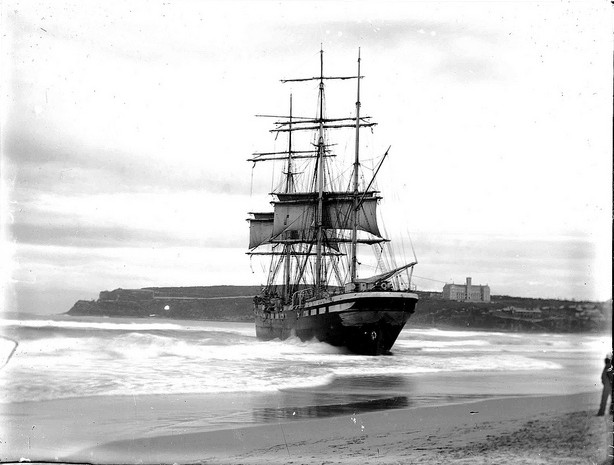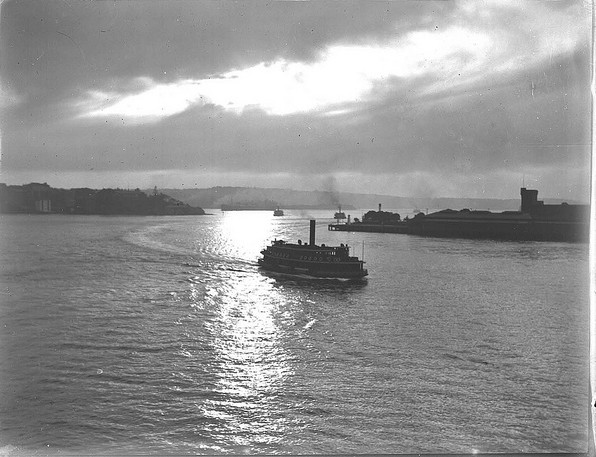Last Thursday I had the pleasure of presenting to members of the North Shore Historical Society on some of the incredible stories unearthed during my time at the Australian National Maritime Museum (ANMM). Of particular focus was the work of a group of researchers or ‘super sleuths’ on Flickr Commons, who tirelessly researched the museum’s Samuel J Hood collection and shared their discoveries with the world.

French three-masted barque Vincennes aground on Manly Beach Sydney, May or June 1906. Samuel J Hood studio, ANMM collection.
In a career spanning almost 70 years, Hood remains one of Sydney’s most prolific photographers; each image a snapshot of Sydney’s vibrant social and cultural history. There’s the story of the mystery lady, who remained anonymous until one sleuth discovered her identity trawling through issues of The Home quarterly magazine at the National Library of Australia (NLA). There’s also the glamorous film stars who disappeared attempting to cross the Tasman Sea in a motor launch, the rise and fall of an American shipping family cursed by a series of unfortunate events and the striking series of images capturing during the aftermath of the Greycliffe ferry disaster. These Flickr ‘armchair archaeologists’ were also able to identify a series of photographs depicting Australian troops marching the streets of Sydney during World War I.
What is happening online with cultural institutions increasingly making their collections available, is having a dramatic impact on the way history is being understood.
Sam Hood’s glass-plate negatives demonstrate not just the power of the image, but also that there are new stories being discovered, and fresh questions being raised. Historical puzzles like the Greycliffe mystery become not so much more complicated, but more multi-faceted. This seems to further prove to me, the continuing importance and relevance of history.
Perhaps, in light of current discussions surrounding the place history holds in a contemporary context, now more than ever, the pursuit of the past holds exciting possibilities. What is happening online with cultural institutions increasingly making their collections available, is having a dramatic impact on the way history is being researched, interpreted and understood. With every new record that is digitised online, a new side of history emerges. And as demonstrated by this small collection of compelling stories, we’re only scratching the surface.

Sydney Harbour steam ferry approaching Circular Quay, 1901-1953. Samuel J Hood studio, ANMM collection.
I want to finish with another Hood photograph. In an exhibition I curated at the ANMM, we offered audiences the chance to choose their favourite Hood photo for display in the exhibition and create their own exhibition label. This one was chosen by a Robert Osborne, who wrote a poem.
I think the poem captures the capacity of history to inspire, I think it summarises its ability to create a powerful nostalgia, a yearning that demonstrates the contemporary relevance of history in people’s lives:
A memory of the past,
the glorious days of old.
The smell of oil and steam,
the shine of brass.
Gone, but still a dream.
Special thanks to Vilma Bowers and Geoff Huntington and all those welcoming members of the North Shore Historical Society.
